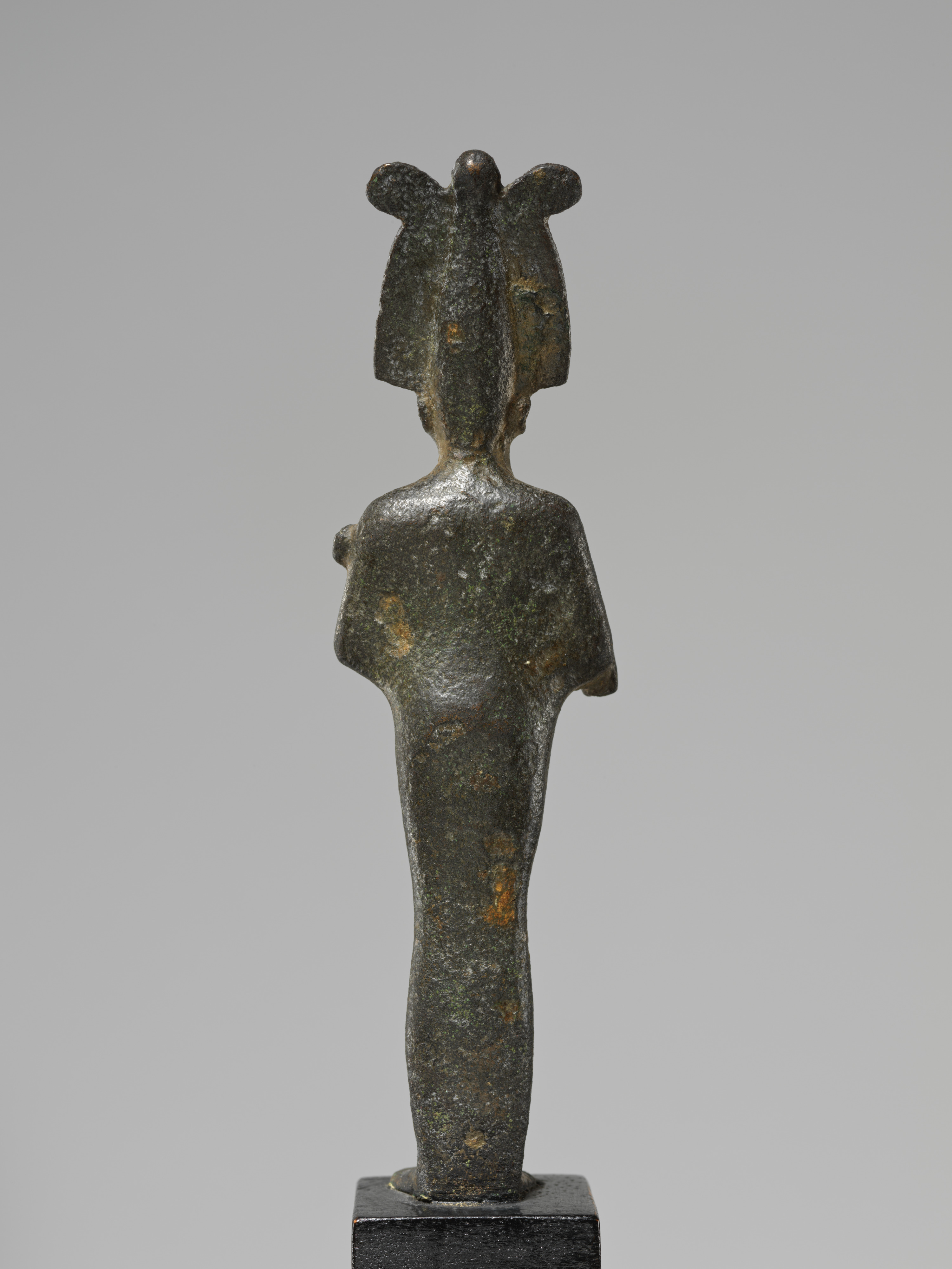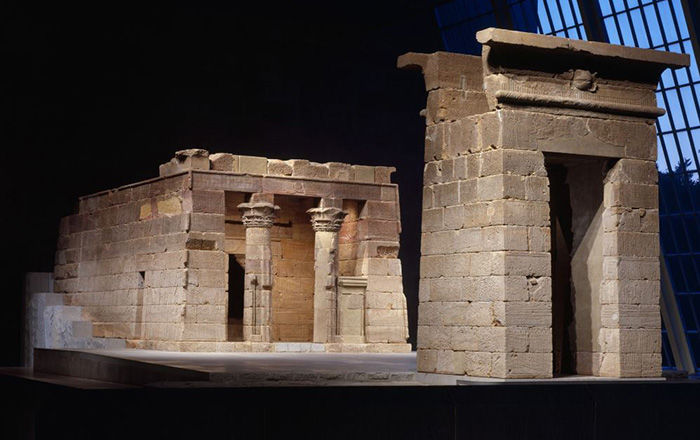Figure of Osiris
Late Period–Ptolemaic Period
Osiris, ruler of the Netherworld, is shown here in his traditional form, wrapped in an enveloping shroud from which only his head and hands emerge. These hold the crook and flail, symbols of kingship. On his head he wears the atef crown, the tall crown associated with Upper Egypt, flanked by ostrich plumes signifying maat, the cosmic order. A rearing uraeus cobra set on the front of the crown protects the god, ready to spit fire and poison at his enemies. Strapped to his chin is a long, plaited beard that curls up at the end, identifying him as divine.
During the late second and first millennium B.C., it became common practice to dedicate figures of Osiris in his temples and shrines, as well as in sacred places honoring other deities and in animal cemeteries. The abundance of these figures reflects this god’s importance, and also the changing cult practices that prompted the wide-scale offering of deity statuettes.
This image cannot be enlarged, viewed at full screen, or downloaded.
This artwork is meant to be viewed from right to left. Scroll left to view more.



